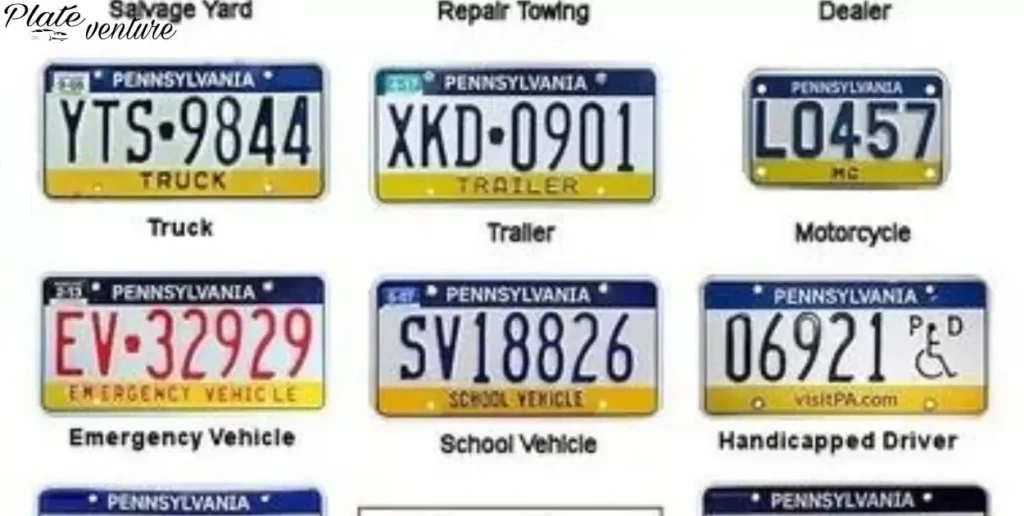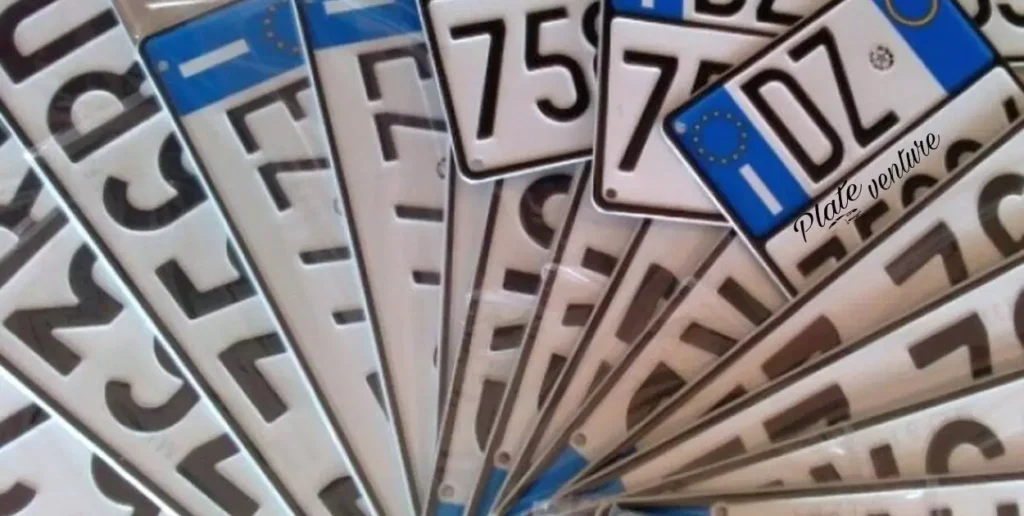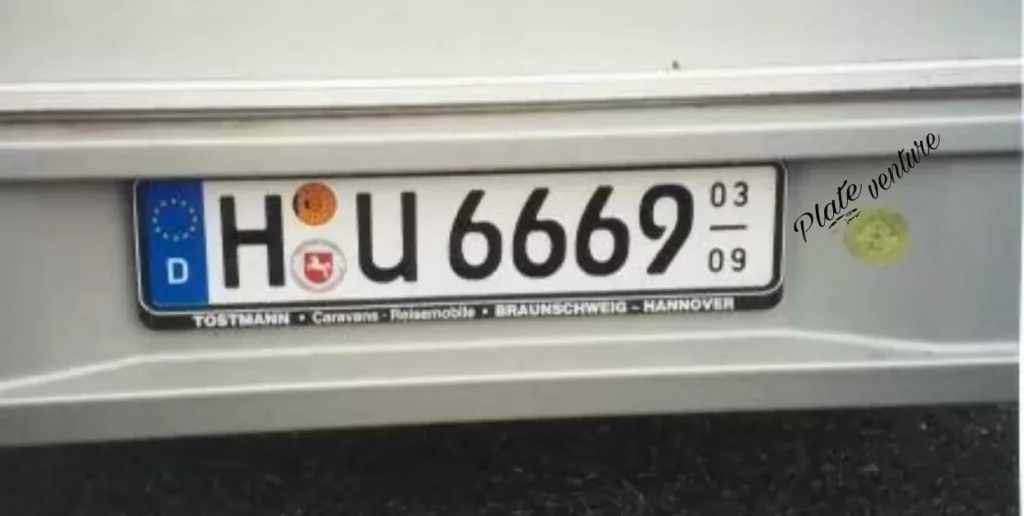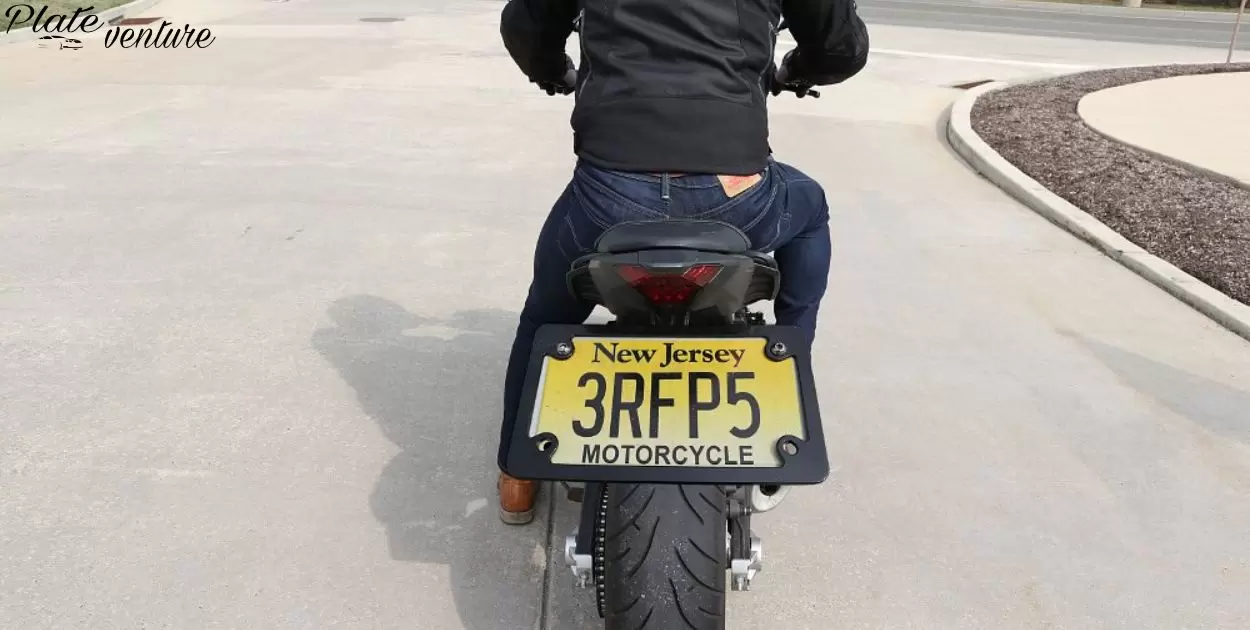The size of a motorcycle license plate refers to the physical dimensions of the plate that is legally required to be displayed on motorcycles. Motorcycle license plates are typically smaller than standard automobile license plates due to the smaller size of motorcycles.
What is the size of a motorcycle license plate? This question arises for motorcycle owners and dealers when obtaining and mounting license plates onto motorcycles. Knowing the proper size helps ensure legal compliance and a good fit on the motorcycle.
Motorcycle license plates in the United States are generally around 7 inches in width by 4 inches in height. This compact rectangular size is well-suited for mounting on motorcycles without obstructing critical components. Specific dimensions may vary slightly by state. Having this standard sizing makes production and distribution of motorcycle plates more consistent across different states.
What Are The Standard Dimensions For Motorcycle License Plates?
There is no true standard for motorcycle license plate dimensions in the United States. However, 49 out of 50 states use a motorcycle plate measuring 7 inches x 4 inches. The one exception is Minnesota, which uses a plate measuring 7-3/16 inches x 4-3/16 inches. So while not an absolute standard, 7 x 4 inches is by far the most common motorcycle license plate size used.
What Is The Typical Size Of A Motorcycle License Plate?
As mentioned above, the typical motorcycle license plate size in the United States is 7 inches x 4 inches. This allows the plates to fit on most motorcycles while still meeting state requirements for visibility of the plate numbers and expiration stickers. So for the vast majority of states, this compact rectangular plate is the norm for motorcycles.
How Does Motorcycle License Plate Size Vary By State?
Apart from Minnesota being slightly larger at 7-3/16 x 4-3/16 inches, motorcycle license plates do not vary much state by state. 49 out of 50 conform to the common 7 x 4 inch dimensions. And review of the sources shows general consistency on vertical plate height, horizontal length, bolt hole spacing, and lettering height from state to state. So there is little variation or customization allowed in motorcycle plate sizes across the United States.
What Factors Impact Motorcycle License Plate Dimensions?
The main factors that impact motorcycle license plate dimensions are visibility and accommodation of motorcycles themselves. The plates need to be large enough to clearly display the plate numbers, state name, expiration, etc. But they also cannot be so large as to overwhelm the styling of the motorcycle or get in the way of critical components. So the compact 7 x 4 inch size used across almost all states balances visibility regulations with appropriate motorcycle fit.
Are There Regulations For Motorcycle License Plate Sizes?
Yes, the federal government leaves it up to each state to regulate motorcycle license plate sizes. And most states have landing on the common 7 x 4 inch dimensions as their standard through state regulations.
These regulations cover specifics like height and width dimensions, border space required around plate numbers, standardized mounting bolt holes, and minimum lettering height for plate numbers. So while there’s no national standard, individual state regulations shape motorcycle plate sizes.
Why Is Motorcycle License Plate Size Important?

Motorcycle license plate size is important because plates that are too small can be difficult to read, especially from a distance. This can make it hard for law enforcement or toll booth cameras to identify a motorcycle, potentially leading to missed violations or tolls.
Very small plates may not leave enough room for required registration stickers and other information. Standardized sizes ensure plates are legible and have space for necessary decals.
How Does License Plate Size Affect Visibility And Legibility?
License plate size significantly impacts the visibility and legibility of motorcycle plates. Smaller plates reduce the space available for larger lettering and numbers, making them harder to discern from a distance.
This is problematic since regulations often require plates to be legible from 50+ feet away. Overly large plates can also create issues by extending beyond the dimensions of a motorcycle’s bodywork, reducing visibility.
Standardized sizing aims to balance visibility with available space on motorcycles. The Size Of License Plate Screws used can also impact the secure mounting of license plates. Using screws that are too small or too large for the mounting holes may lead to loose plates over time.
Can Small Motorcycle License Plates Lead To Issues?
Yes, using license plates that are too small on motorcycles can lead to a variety of issues. As mentioned, compact sizing reduces legibility and makes it harder for cameras or law enforcement to identify bikes properly.
This may result in missed tolls, undetected violations, or difficulties tracing vehicles. Very small plates also leave less room for legally required stickers and registration information. Some states prohibit sizes below certain dimensions to avoid these problems.
What Problems Can Oversized Motorcycle Plates Cause?
5 short problems that oversized motorcycle license plates can cause:
- Plates sticking out too far can hit legs of riders and passengers. This can lead to injuries.
- Oversized plates may cover tail lights or turn signals. This reduces visibility and safety.
- Large plates can rub and damage motorcycle fenders or body panels over time.
- Added wind resistance from bigger plates affects motorcycle handling at high speeds.
- Some oversize plates don’t fit existing mounts. This leads to loose plates that rattle or fall off.
Should Motorcycle License Plate Sizes Be Standardized Nationally?
Standardizing motorcycle license plate sizes across the country would be beneficial. This would establish consistent dimensions optimized for visibility, legibility, and compatibility with motorcycles’ compact frames.
Standardized sizes would also simplify and streamline manufacturing, registration, enforcement, and other processes. However, accommodations could still be made for special plates that require larger or smaller dimensions than the norms. Overall, standardized sizing would help maximize motorcycle plates’ functionality.
How To Determine The Proper License Plate Size For A Motorcycle?
To determine the proper license plate size, first check your state’s department of motor vehicles website, as they provide specifications on required dimensions. Most states use a standard 4 inches high by 7 inches wide plate, though some have variations. You can also measure your current plate and order a replacement matching those measurements. Consider that many accessories are designed for the common 4″ x 7″ size.
What Measurements Are Needed To Select The Right Motorcycle License Plate Size?
The key dimensions needed are the plate’s length, height, bolt hole diameter, and distance between the centers of the two bolt holes. Having these measurements will ensure you get a plate that fits the mounting points on your motorcycle. Some states regulate the size, while others allow more variation. If replacing a plate, measuring the old one ensures an accurate fit.
What Is The Process To Accurately Measure For A Replacement Motorcycle License Plate?
Use a ruler or calipers to precisely measure length and height. For bolt holes, use a drill bit, gauge pin, or calipers to determine diameter. Measure horizontally between hole centers. Double check measurements against your state’s specifications. When ordering, provide all dimensions: plate length and height, bolt hole diameter, and horizontal distance between holes.
Where Should A Motorcycle License Plate Be Positioned For Ideal Visibility?
The license plate should be mounted on the rear of the motorcycle, oriented horizontally, with the top edge at least 12 inches but not more than 48 inches above the ground. This ensures it is within the viewing angle of standard plate scanners. It should be clearly visible, unobstructed, and illuminated at night per state laws.
What Are Best Practices For Mounting A Motorcycle License Plate?
Use the manufacturer’s license plate mounting bracket if available. Ensure it orients the plate properly and allows adjustment within legal height limits. Use mounting bolts that match the plate’s bolt holes without requiring redrilling.
Mount it stably so the plate cannot swing or vibrate. Check that plate and lights meet visibility standards by sitting on your bike. Consider a license plate frame to protect the plate edges.
What Additional Factors Influence Motorcycle License Plate Design?

Additional factors that influence motorcycle license plate design include the size and dimensions, mounting location, materials used, visibility needs, and customization options. Motorcycle plates are generally smaller than standard plates, typically measuring around 7 inches wide by 4 inches tall.
They need to be mounted securely while allowing for suspension travel and lean angles. Common materials are aluminum and plastics which resist corrosion and fractures. Reflective coatings or prints are important for night visibility. Some states allow custom plates with special backgrounds and lettering styles.
How Does Color Contrast Impact Motorcycle License Plate Visibility?
High color contrast between the plate background and lettering/numbers is critical for visibility, especially at night. White or yellow backgrounds provide brightness to stand out against dark environments. Black lettering maximizes the contrast against light backgrounds.
Some states require a blue or red color for certain plate types to differentiate motorcycles from other vehicle classes. Using colors smartly allows plates to be easily spotted from wider angles and longer distances. This aids police and toll systems in identifying bikes.
What Types Of Materials Can Be Used For Making Motorcycle License Plates?
Materials for motorcycle license plates can be:
| Material | Description |
| Aluminum | Thin sheets of aluminum are commonly used. |
| Plastic | Plastic plates are durable and weather resistant. |
| Fiberboard | Fiberboard plates were used during World War 2 due to material shortages. |
| Porcelain | Porcelain license plates were common long ago. Delaware last made them in 1942. |
| Copper | Arizona briefly made license plates out of copper in 1932-1934. |
| Reflective sheeting | Special reflective materials help plates be seen at night. |
| Adhesive sheeting | Adhesive sheets stick reflectors and numbers to the plates. |
The most common modern motorcycle license plates are made from aluminum sheets covered in reflective adhesive sheeting. These materials make lightweight, durable, and visible license plates. Some states allow decorative plates made from various other materials too.
Are There Any Special Considerations For Custom Motorcycle License Plates?
Custom motorcycle plates allow unique designs but have regulations to follow. The state name and plate numbers meeting legal formatting must be clearly visible. Any graphics or backgrounds cannot obstruct critical identifying text. Some states restrict certain words or images.
While custom plates let riders express individuality, they must meet standards ensuring law enforcement can properly identify the vehicle. This balances personalization with public safety needs.
What Legal Requirements Apply To Motorcycle License Plate Text And Format?
States legally require certain information on motorcycle license plates, including a specific state name or abbreviation, a plate number with alphanumeric formatting rules, expiration year stickers, and identification of special plate types. This standardized information must meet minimum text size and legibility standards.
Consistent text formatting allows easy visual recognition by police and cameras. Some states mandate features like regional county codes or color coding by plate type. These legal requirements aim to maximize license plate visibility and scanning effectiveness.
How Are Miniature Motorcycle License Plates Used?
Miniature motorcycle license plates are used on small bikes and scooters that meet the criteria to be street legal. They allow the vehicle to be properly registered and identified while on public roads.
The plates must meet visibility and legibility regulations, typically being readable from 50+ feet away. They are attached to the rear of the vehicle, often with a light to illuminate the plate when riding at night.
When Would A Miniature Motorcycle License Plate Be Needed?
A miniature license plate would be needed any time someone wants to make a small displacement motorcycle, moped, or scooter street legal for operation on public roads. Models that fall below certain engine size and speed capabilities may qualify for mini plates that take up less space on the vehicle. This allows tiny bikes to meet legal registration requirements in jurisdictions that permit them.
What Are The Rules Around Using A Mini Motorcycle License Plate?
The rules vary by state, but generally the mini license plate needs to follow the same regulations as standard plates when it comes to visibility, night illumination, condition, legibility from required distances, proper mounting, no obstructions, etc. They must be properly registered and renewed. The plate numbers and letters need to match what is on file for that vehicle.
How Small Can A Motorcycle License Plate Be According To Regulations?

There is no universal maximum or minimum size for motorcycle license plates. The key criteria they must meet are to be legible from required distances (typically 50+ feet), visible, securely fastened, illuminated at night, and contain all the legally required information like plate number, state, registration stickers, etc. So the plate must be large enough to accommodate these factors.
Where Should You Place A Miniature Motorcycle License Plate On A Bike?
Miniature motorcycle license plates should be installed on the rear of the vehicle in a place that meets legal visibility requirements. This is often on the fender or frame towards the back. They should be oriented horizontally and mounted securely. The plate needs an illuminated light as well for night riding. The goal is positioning that maximizes visibility and legibility to law enforcement and other vehicles.
Frequently Asked Question
What are typical dimensions for motorcycle plates?
Most states use plates around 7 x 4 inches or 180 x 100 mm for motorcycles and smaller vehicles.
Do motorcycle plates have smaller text and numbers?
Yes, motorcycle plates often reduce the text size to fit the smaller surface area while remaining legible.
Why are some states different motorcycle plate sizes?
States with non-standard motorcycle plate dimensions may have specialized mounting systems or identification requirements.
Can I get oversize plates if I want bigger text?
Some private vendors offer larger custom motorcycle plates but may not meet legal standards for state-issued plates.
Is there a standard for bolt hole spacing on motorcycle plates?
Motorcycle plates often use around 6 inch bolt hole spacing horizontally and 3 inches vertically to allow mounting flexibility.
Conclusion
There is no universal standard size for motorcycle license plates across the United States. However, most states use plates that are around 4 inches high by 7 inches wide for motorcycles. These miniature plates are smaller than the standard 6 by 12 inch plates used on cars, allowing them to fit on motorcycles and scooters while meeting legal visibility and registration requirements.
So in summary, while motorcycle license plate sizes are not consistent nationwide, the typical dimensions are approximately 4 by 7 inches. These compact mini plates must follow the same regulations as regular plates when it comes to night visibility, legibility, proper orientation and mounting.
All motorcycles, mopeds and scooters operated on public roads need license plates, making miniature versions essential for owners of smaller bikes. As long as the critical information remains clear and visible, these pint-sized plates allow tiny vehicles to meet registration laws.








